Description
- Extremely Flexible: This flexible panel is capable of meeting a wide range of applications where standard panels can be inconvenient to mount, such as on the curved roof of an airstream
- Ultra Lightweigh: Thanks to advanced polymer materials, this product weighs 70% less than conventional solar panels, making transportation and installation a breeze
- Super Thin Lamination: Hardly noticeable, the Renogy 175W Lightweight Panel laid flat is only a tenth of an inch tall. Approximately 95% thinner than its rigid counterpart, this panel is ideal for a stealthy solar setup
- Highly Durable: Rigorously tested, the 175W panel Was designed to withstand extreme wind of up to 2400 PA and snow loads of up to 5400 Pa
- Potential Uses: The Renogy 175 Watt Flexible Monocrystalline Panel can be primarily used on off-grid applications that include marine, rooftop, RV, boats and any curvy surfaces
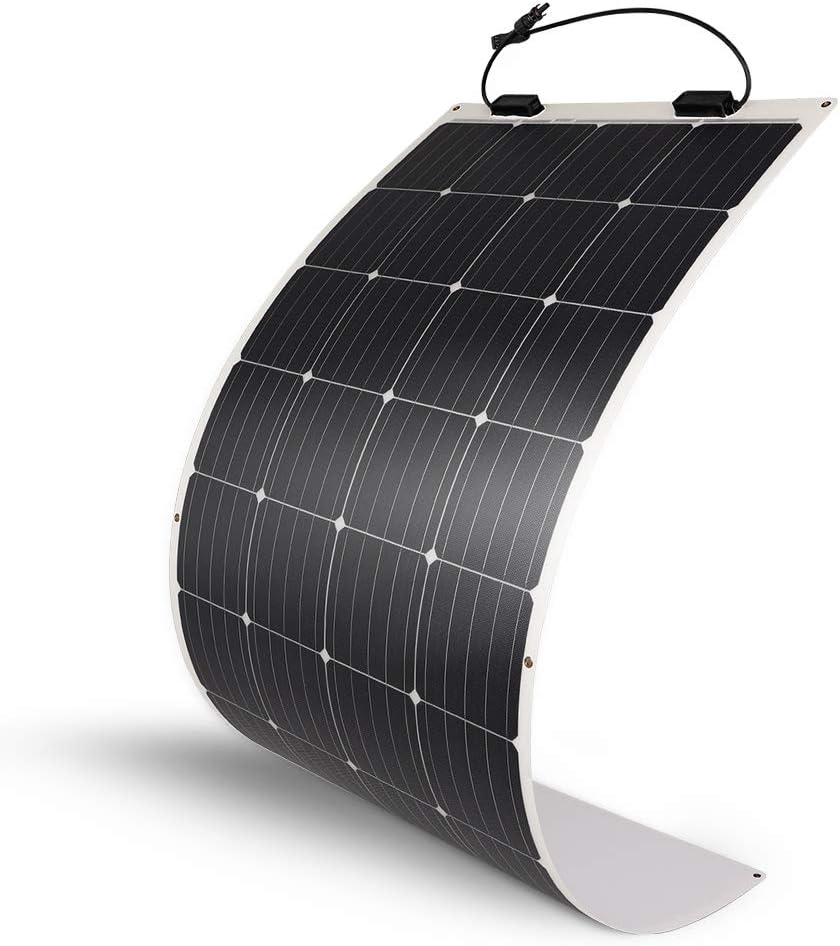
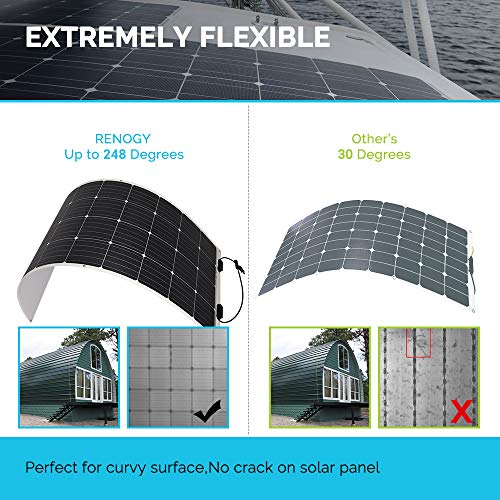
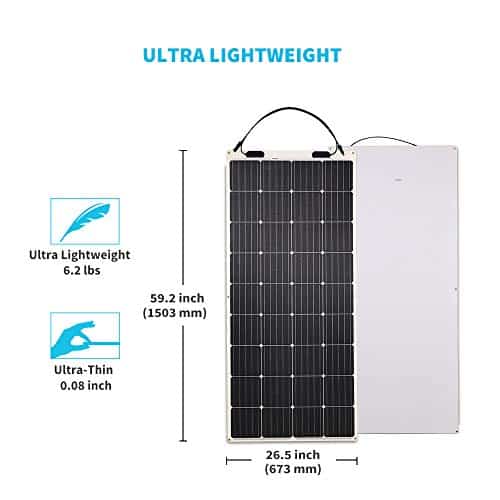
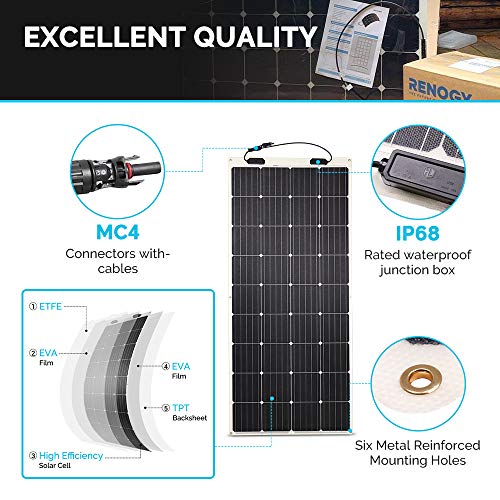
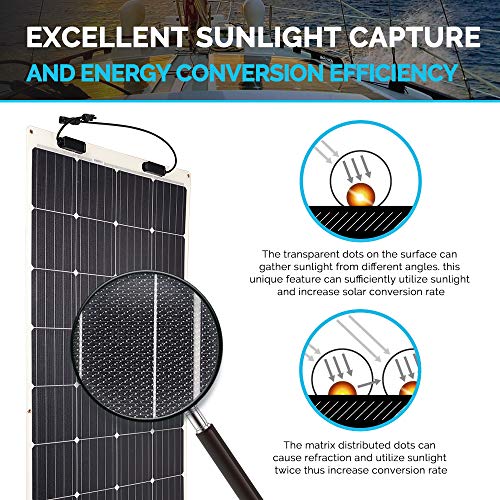
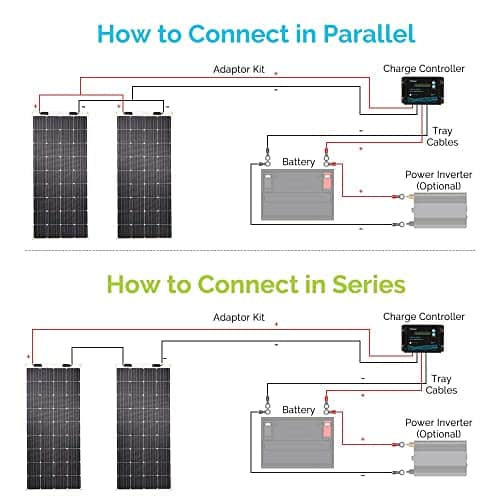
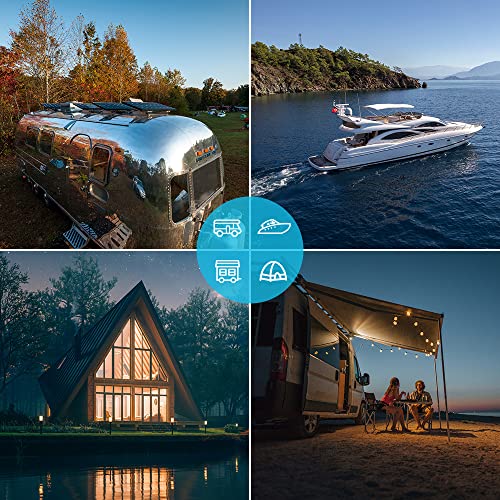
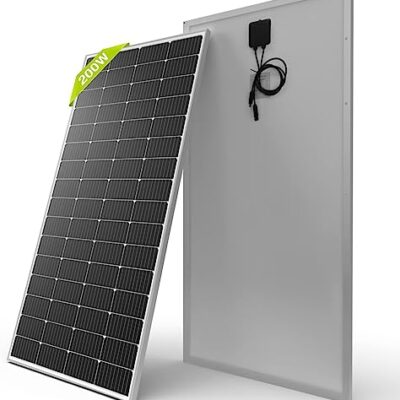
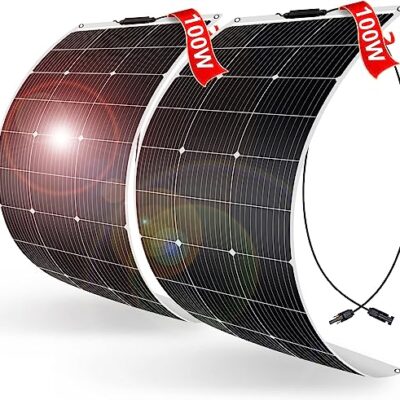

BURT –
I wasn’t sure about this panel because of the price per watt but it is what I wanted so I got it. I am glad I got it. I used it the first day just to check it out. I threw on the back deck connected to my Yeti 1000 and I got 145 watts about 11 in the morning. I didn’t even aim it at the sun, just basically tossed it on the deck. I figured what the heck might as well charge up my yeti since its connected and it charge it from 42% to 100% in less than 4 hours. I dont know exactly how long cuz when I came back the first time to check on it it was charged. Now this panel is bigger than most 100 watt panels dimensionally. The misconception I had is that in the pictures it looks just like a regular size 100 watt panel. Nope, significantly bigger but not to crazy big. It is still manageble. In my opinion, if your not powering a house, this panel and a battery bank of 100 to 200 ah will you get you most of the way depending on your needs of course.. Oh and another couple data points I seen 47 watts with clouds blocking the sun and 14 watts sitting in the shade with ambient light. The purpose of this panel is for supplementing my 190 watt RV system when conditions are less desirable. I can just add it on or take it away and it stores under the mattress in the RV. Im impressed!
DiscriminaTor –
Very good quality.
C. Beck –
During a trip in Central Florida we were caught in a hail storm. These panels showed no visible damage and performed as well as the initial install. In the optimum position the produce the rated power or greater of 175 watts. Laying flat they still produce 140 watts as tested. Mounted 2 in parallel they produce 240 watts. A different brand 160 watt panel has noticeable hail damage and only produces 50 watts. Replacing that one with the renogy 175 watt. Great product.
BURT –
It quickly became clear to me that reviewing a solar panel is more involved than reviewing a toaster!
I have a “decent” basic knowledge of electricity, but I must say I’ve learned a LOT more since purchasing my four 175 watt (@ 20 volts, 9 amps each) Renogy Solar Panels for my Promaster Van.
1) Order “Must Have” Items to attach to van/RV roof without drilling holes and allow future removal :
Eternabond 3″×50″ 1 roll – use sparingly.
Velcro,15′ x 2″ Industrial Self Sticking, 1 box per panel. See pictures. OK, You will probably need to drill ONE necessary hole to bring the final two cables to the inside- also get an entry gland for that. The Velcro should be attached in strips on the raised roof ridges. Renogy says an insulated layer is unnecessary. After 3 months of searing heat, and some rain, all four panels are still secure.
2) Purchase the max wattage, and max # of Panels that will fit up on your van/RV roof. Get the BEST and as MANY Solar Panels (and MC4 connectors, cable, and Y branch adapter) you can afford- you don’t want to regret your buying decision on every future road trip, especially after all your work installing these panels. A good crimper like the WISS Solar PV Cable Crimping Tool will help a lot. Incidentally, Renogy has EXCELLENT Customer Support. Contact them with ANY questions.
3) Install an EVEN NUMBER of panels, so you can connect your setup in a “series and parallel combination”(Google that to view examples). Per Renogy, they should all be of equal size/power.
4) With 4 175 watt panels, I put 1 pair in series, I put the other pair also in series, then I put these two sets of pairs in parallel, so I now had a series parallel COMBINATION that yields 40 volts @ 700 watts, but only 17 amps, going to the Yeti or charge controller. Always Remember, WAV: Watts=Amps x Volts. (My 3000X Yeti will allow a max of 50 volts and about 1000 watts of charge).
If you put ALL 4 of your 175 watt panels in parallel, you’ll have an output of only 20 volts and 37 amps, and your panels won’t start to charge your batteries until direct sunlight hits them. The high amperage will also cause your cables to get very hot.
If you use the series AND parallel combination, you’ll get 40 volts and only 17 amps, which means you can use smaller wiring (10 gauge) that won’t overheat. You will also see charging as soon as daylight starts until dusk. You’ll achieve the SAME charge rate of rated watts either way! Speaking of advertised panel wattage claims, you’ll find that the time of year, where you are parked, air quality (smog/haze), and of course, time of day, WILL AFFECT the rate of charge. Don’t panic if you don’t get the listed wattage, it’s a fact of life! Realistically, expect about 80% of the listed watts rating, on average. It definitely helps to keep them clean. Hose off and squeegee them after it rains. The dust does not disappear after rainstorms, but instead makes a muddy layer up there.
Do not get hung up on “positive” and “negative” ends when you build your ‘array’ of panels, just have your multimeter with you the whole time and make sure you correctly identify the positive and negative final ends that are connected to the batteries.
5) If your Van/RV has 6 or 8 little T posts on the roof, you’ll get a LOT of peace of mind attaching each panel to the posts. Use some 1/16″ wire rope cables to connect to a grommet anywhere on the panels parameters that you can.
After driving around with these 4 Renogy Flexible Solar Panels on my Promaster for 2 months +, I am very happy overall. Their super thin, light design makes them ideal for zero wind drag, and they are absolutely INVISIBLE from ground level. They are a solidly built and well performing panel, and I am glad I made the investment to get the best Solar Panels available.
HomeSweetHome –
Pas encore utilisé mais a signaler un transport et livraison top niveau par UPS – colis un peu light mais bien signalé et protégé – Sur ce genre de produit, fragile, UPS est une excellent choix
Kel Campbell –
Why would they make the wires so short and on opposite sides. They don’t reach Side by side or top to top to make connection. Stupid really
Vincent Vassello –
The media could not be loaded.
read the headline.
HomeSweetHome –
Wir haben den Artikel für unser Boot gekauft. Das Panel ist im Vergleich zu günstigeren super verarbeitet und bringt gute Leistung. Kann das PV Panel und andere Artikel von Renogy nur empfehlen.
NJSARN_SoCal –
Based on the description, I assumed these would produce 12 Volts. But when I put a meter on one it was 24 volts. Two in series was 44 volts, which exceeds the max voltage for my controller. Now I have to stop the project and order Y adapters to run them in parallel.
nunya –
Bought two of these for my Sprinter Van. Happy with the performance. I got 250 to 300 watts on fully sunny days charging 800 Ah CHINS batteries. The reason is that if the batteries are nearly full, my Smart Victron MPPT will reduce the charging current and the observed wattage from solar PV reduced as well. I’m buying more to populate my boat (38′ sailing Yacht). Love these panels it starts producing electricity from dawn to dusk. My house solid panels start to produce around 9-10 am.
NJSARN_SoCal –
UPDATE-
Now that I’ve had the chance to actually use them, I can report that they’re NOT producing 175W- not by a long shot. In my configuration, I have 2 of these connected in series and the max solar production I’ve had was 250w (100w short of the 350 advertised). I’m using AWG 10 cabling which is still bigger than panels’ own cables of AWG 12, so cabling can’t be the culprit here, especially considering they’re connected in series, so the actual current is pretty small. In comparison, under the same exact conditions, i.e. clear sky with mid-day sun, my high-quality rigid panel rated at 315w actually produced slightly more than its rating, upwards of 320. I still like the build quality of these panels and considering they’re flexible and lightweight, they’re a keeper. Just set your expectations accordingly re. power output. One star off for misleading rating.
Excellent panels that look very well built but only time will tell, of course, how well they stand up to the elements. I’ve clocked them at over 23V (open circuit) under afternoon sun.
The only complaint so far is the cables are of different length with one being extremely short, 1ft on one of the panels- they’re of equal length on my second panel. Clearly, some production QA issues, hence one star off. This is for the 175 watt version I bought.